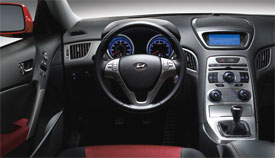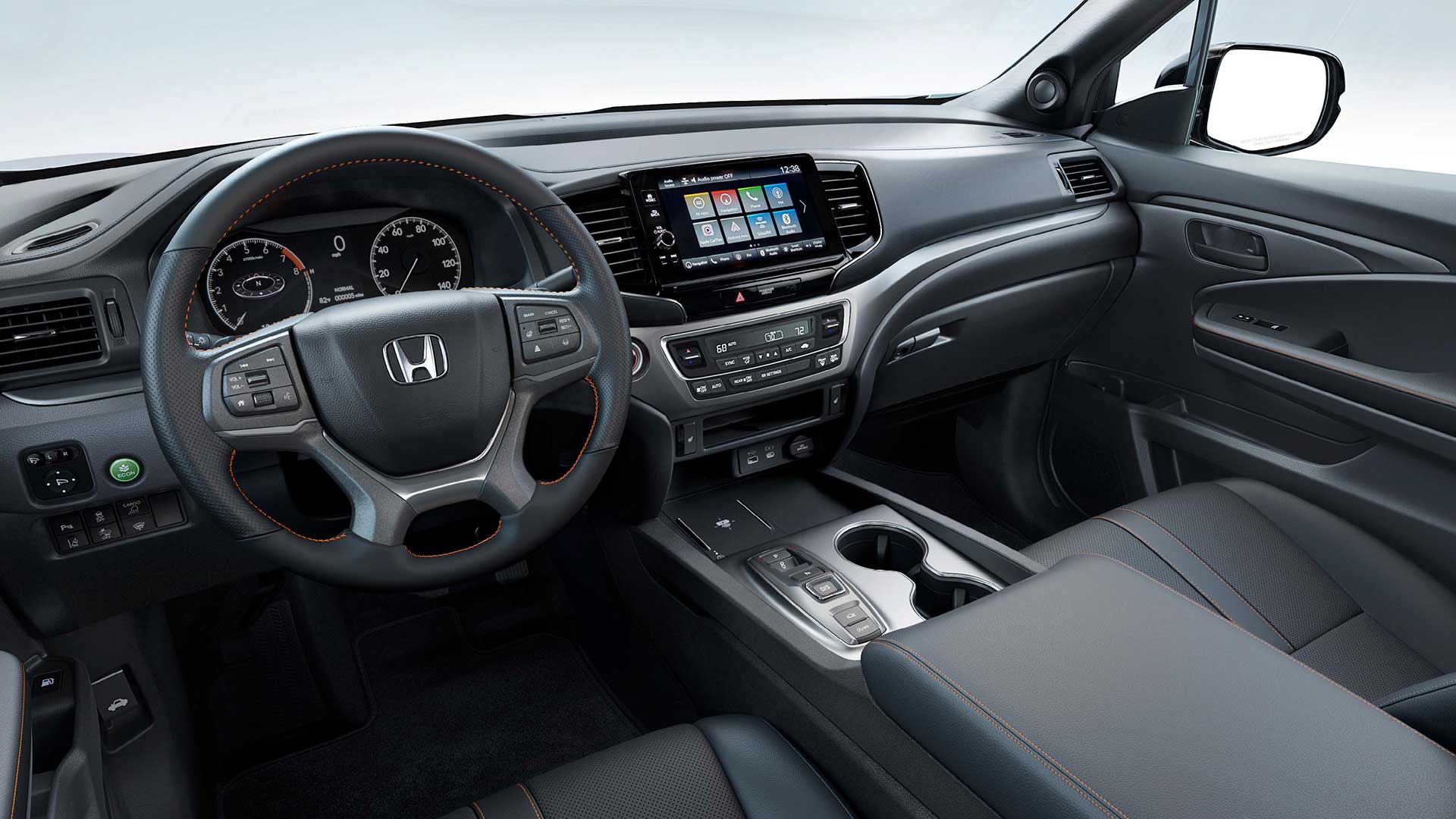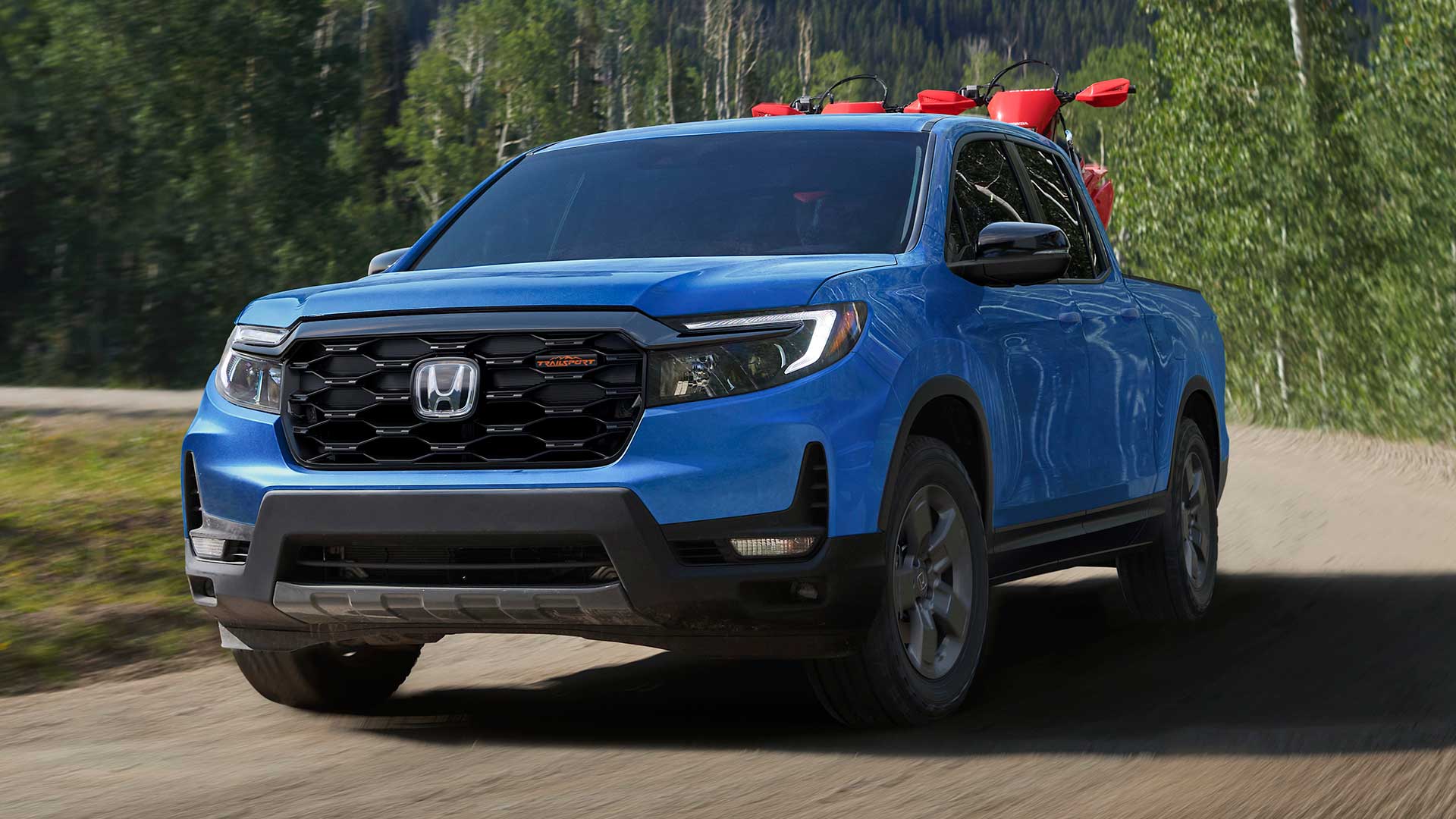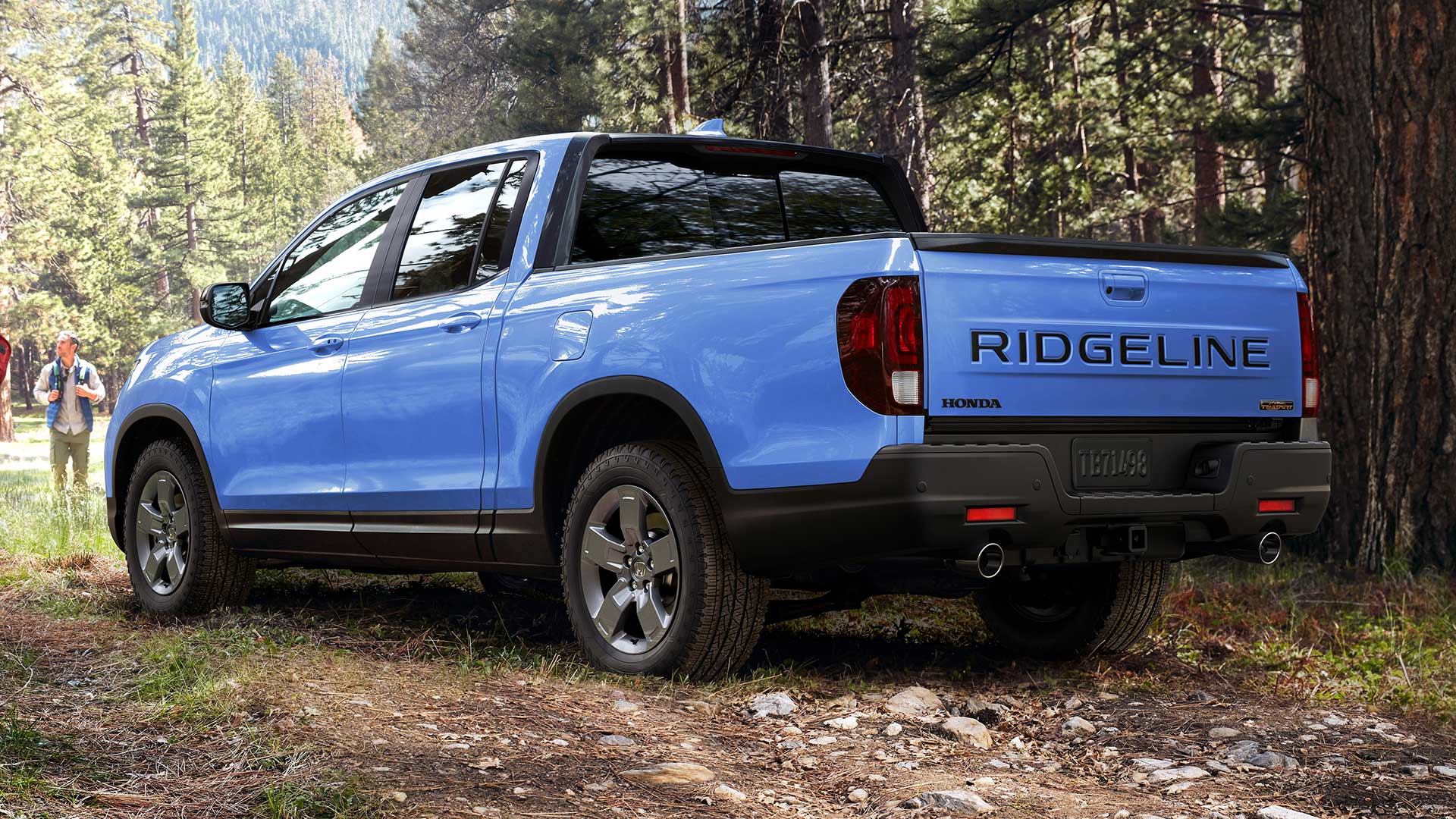2010 Hyundai Genesis Coupe
By now everyone that is into cars has heard the accolades heaped upon the Hyundai Genesis. We even picked this stylish sedan as our “best luxury car” of the year. But, is Genesis really a new beginning for a more upscale Hyundai? Well that’s where the new Genesis Coupe has to prove itself. So, let’s see if Genesis can evolve into a full carline, and not be just a one hit wonder.
It’s true that the Genesis Sedan and the new, 2010 Hyundai Genesis Coupe share the same nameplate, the same basic rear-wheel drive architecture, and a bit of overlap in powertrains. But beyond that, they struck us as two very different cars.
The plush four-door Sedan competes with the likes of the BMW 5-Series and Lexus GS. But, the two-door Coupe is more a Korean counter to Detroit’s muscle stalwarts, Camaro and Mustang, with an eye on the G37 Infiniti Coupe.
In terms of form, the Genesis Coupe takes on a truly low slung but aggressive look. Like the Tiburon before it, its proportions, racked stance, exaggerated haunches, and powerful curves, are right out of the contemporary Japanese sports car textbook.
Glaring Xenon HID headlamps spearhead the coupe’s short, bulldog snout, and its fast profile wears a flowing beltline contrasted by a jagged “Z” character lines.
18- or 19-inch alloys, a stubby rear deck, bright exhaust tips, and available spoiler, punctuate the performance look.
 And to put substance to that look, the Genesis Coupe sports either a nicely exposed 2.0-liter turbocharged four, good for 210 horsepower and 223 pound-feet of torque; or the sedan’s 3.8-liter V6, with 306 horses and 266 pound feet of torque. There is no V8.
And to put substance to that look, the Genesis Coupe sports either a nicely exposed 2.0-liter turbocharged four, good for 210 horsepower and 223 pound-feet of torque; or the sedan’s 3.8-liter V6, with 306 horses and 266 pound feet of torque. There is no V8.
With 6-speed manuals standard, the I4 can be tied to a 5-speed automatic, while the V6 auto is a 6-speed. Both autos with steering wheel paddle shifters.
Flicking them for all their worth, our 3.8-liter V6 jumped sharply from 0 to 60 in 6.1 seconds and finished the 1/4 mile in 14.4 seconds at 100 miles per hour. Torque at launch was exceptional, building steadily with no dead spots. Gear changes were fairly quick and very smooth, though the steering wheel shifters felt cheap and hokey. Overall, however, the V6 Genesis Coupe is swift and entertaining in the straight line.
For turns, our Grand Touring Coupe has the standard sport-tuned suspension; braced MacPherson struts up front, and a five-link design in the rear. Electronic Stability and Traction Control come standard.
Through the cones, the coupe felt smaller and lighter than its 3400 pound weight would indicate. Grippy tires and a planted chassis give this car a ton of agility, and there’s virtually no body roll. The Coupe is quick to turn with just a mild touch of understeer. And when pushed hard, it remains both nimble and very well-balanced. Yes, it’s fun.
But, as to ride quality, our GT felt more sporty than premium. You know every bump in the road. Track models don even stiffer springs and shocks that might make it tiring as a daily driver.
All Coupes come with ABS disc brakes with Brake Assist 4-piston Brembos on Track models. With standard brakes, stops were straight, stable, and smooth, averaging a decent 130 feet from 60 to 0.
 Inside, the Genesis Coupe is also visibly a different venue than the Sedan. The stylishly cockpit says serious sport coupe. In fact the tight gauge cluster would be at home on many an exotic.
Inside, the Genesis Coupe is also visibly a different venue than the Sedan. The stylishly cockpit says serious sport coupe. In fact the tight gauge cluster would be at home on many an exotic.
But, materials and fit and finish, like in the Genesis Sedan, exceed even premium status. Mid-level Grand Touring trim includes leather on the well bolstered bucket seats, with heat and power adjust for the driver.
The three-spoke steering wheel makes for a nice grip, with controls for audio and cruise. There is also a standard information display, hands free Bluetooth, and an IPod interface, and to pump out those tunes, there’s an Infinity 10-speaker audio system.
The two-passenger rear seating area is relatively easy to access, and offers ample legroom. But the car’s plunging roof line takes headroom down to child size.
Best to fold the seat down to expand the small 10 cubic foot trunk. The trunk opening is also small, and very non-premium u-shaped hinges may give your luggage a crushing blow.
Government Fuel Economy ratings for our V6 automatic Coupe are 17 city/27 highway on Regular gas. We achieved 23.1 in real-world driving and were pretty pleased with it. The 2.0T does about 10% better.
The V6 Energy Impact Score is 16.3 barrels of oil per year, with a Carbon Footprint of 8.7 tons of CO2.
Staying true to Hyundai’s formula for affordability, prices are also closer to Camaro than G37. The 2.0T starts at $22,750, while the 3.8 starts at $25,750. Still, uplevel trims and options will easily take the coupe over the $30,000 mark. But, with such a spread, and great powertrain warranty, the Genesis Coupe should appeal to a much wider demographic than the Sedan.
So that’s the 2010 Hyundai Genesis Coupe. But, rather than adding to the prestige of the Genesis carline, it comes off as more of a mainstream Hyundai. Now, that doesn’t mean it’s not a terrific effort. It truly is, and more proof that Hyundai has evolved into a brand that no rival, import or domestic, can take for granted.
Specifications
- Engine: 3.8-Liter V6
- Horsepower: 306
- Torque: 266 Lb Feet
- 0-60 MPH: 6.1 Seconds
- 1/4 Mile: 14.4 Seconds @ 100 MPH
- 60-0 MPH: 130 Feet
- EPA: 17 MPG City/ 27 MPG Highway
- Mixed Loop: 23.1 MPG
- Energy Impact: 16.3 Barrels Oil/Yr
- CO2 Emissions: 8.7 Tons/Yr
2024 Honda Ridgeline TrailSport
It Does Truck-Like Things Better Than Ever
Honda brought something truly unique to the pickup truck scene when their mid-size Ridgeline debuted for 2006. In 2017, it moved towards becoming a little more true truck-like, both in form and capability, now with yet another step in that direction for 2024. So, let’s see if the Ridgeline is really hitting its stride.
For 2024, it’s all about making this Honda Ridgeline better than ever. There are styling tweaks outside, along with tech and functional improvements inside, but the biggest news is the Ridgeline has now joined Honda’s TrailSport family of off-road inspired vehicles. This more-true-trucklike, second-gen Ridgeline been around since 2017, receiving periodic updates over the years; but joining the TrailSport family is the biggest leap yet.
Primarily, the TrailSport transformation includes General Grabber all-terrain tires, mounted on new Pewter Gray 18-inch wheels, steel underbody protection, and retuning the strut front, and multi-link rear suspension for added wheel articulation. And while we always appreciate the additional traction of off-road tires, the Ridgeline’s standard i-VTM4 all-wheel drive, with Intelligent Traction Management and snow, sand, and mud settings, was already quite capable of handling all but the most extreme off-roading, ground clearance of just 7.6 inches being it’s only real hinderance.
A 3.5-liter V6 remains under the hood as it has since the Ridgeline debuted for 2006; the current version outputs 280 horsepower and 262 lb-ft of torque, plenty enough muscle to handle its 5,000-lbs. towing capacity. A nine-speed automatic transmission with paddle shifters and bevy of push and pull buttons on the console replaced the six-speed automatic back in 2020.
In addition to adding TrailSport capability, a big focus for this update was making it more user-friendly inside, starting with the central touchscreen growing from 8 to 9 inches. It also gets faster processing speeds, menus have been simplified, and the native navigation system is improved with better graphics. It’s accompanied by a new digital instrument cluster, along with an upgraded center console with more storage space. Unique TrailSport touches include heavy duty floormats, leather-trimmed seats, orange stitching throughout the cabin, and orange ambient lighting.
The Ridgeline continues to offer things available nowhere else in the pickup truck market.
Exterior styling doesn’t exactly shout “macho big rig coming your way,” but the more vertical face and larger grille that arrived for 2021, along with this year’s added TrailSport elements, do continue to toughen up the Ridgeline’s image. The 5’4” bed remains highly functional with no large wheel well intrusions, multiple tie-downs points, lighting and even speakers. And of course, the Ridgeline continues to offer things available nowhere else in the pickup truck market, like the dual-action tailgate, and large, lockable, drainable, underbed storage. Not to mention being able to drive around in true car-like comfort, something we took full advantage of on our way to our Mason Dixon Dragway test track.
There was great grip off the line, with full power arriving smoothly but quickly, helping us to get to 60 in 7.0 seconds flat, a tenth quicker than the last Ridgeline we tested. That power delivery stayed fairly consistent the whole way down the track, barely interrupted by the nine-speed automatic’s smooth shifting. Our best quarter-mile run was 15.5 seconds at 90 mph.

The revised suspension and knobbier tires didn’t really seem to add or detract from handling prowess, as it felt as solid, nimble, and car-like as it always has through our cone course. Perhaps a little less stiff than before, but good feedback, tight steering, and minimal body roll for a pickup, made for a very confidence inspiring experience. In our braking test, we stopped in a respectable average of 123 feet from 60, with only moderate amounts of nosedive and good feel through the pedal.
There is, however, a slight reduction in Government Fuel Economy Ratings with the all-terrain tires; 18-City, 23-Highway, and 20-Combined, our average, right on, at 20.4 mpg of Regular. That’s a slightly below average Energy Impact Score of 14.9 barrels of yearly oil use, with CO2 emissions of 7.4 tons.
TrailSport pricing falls in line just under the Ridgeline’s top Black Edition trim with a starting price of $46,375, about five grand over a base Ridgeline Sport.
So, whether you consider the Honda Ridgeline to be a “real” truck or not, this ruggedly smooth 2024 TrailSport does truck-like things better than ever. And we’re not just talking about the slight upgrade in off-road performance, we’re talking about a flexible bed to help you get chores done, and the ability to tow or haul with comfort and flexibility other trucks can only wish for. It’s why the Ridgeline brings more first-time buyers to Honda than any other vehicle, and why it continues to be a great choice in the growing midsize truck realm.
Specifications
- Engine: 3.5-liter V6
- Transmission: 9-speed automatic
- Horsepower: 280
- Torque: 262 lb-ft
- EPA: 18 City | 23 Highway | 20 Combined
- 0-60 mph: 7.0 seconds
- 1/4 Mile: 15.5 seconds at 90 mph
- 60-0 Braking (avg): 123 feet
- MW Fuel Economy: 20.4 mpg (Regular)
- Max Towing Capacity: 5,000-lbs









